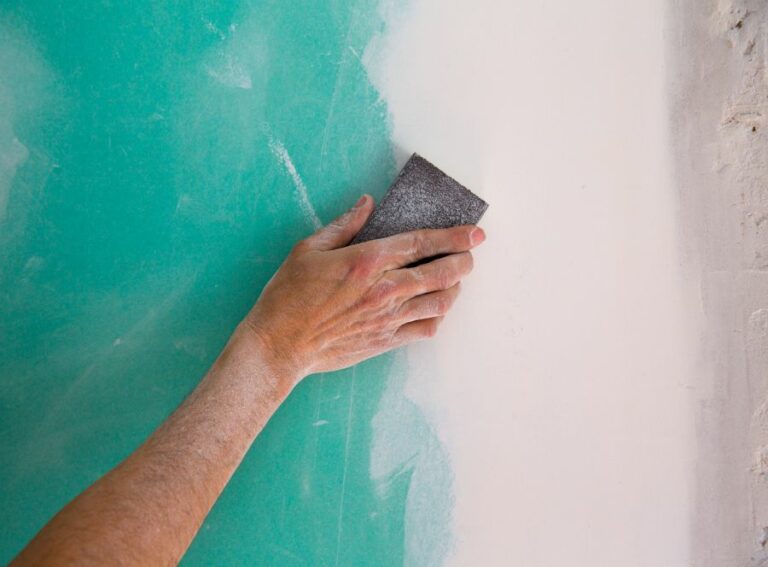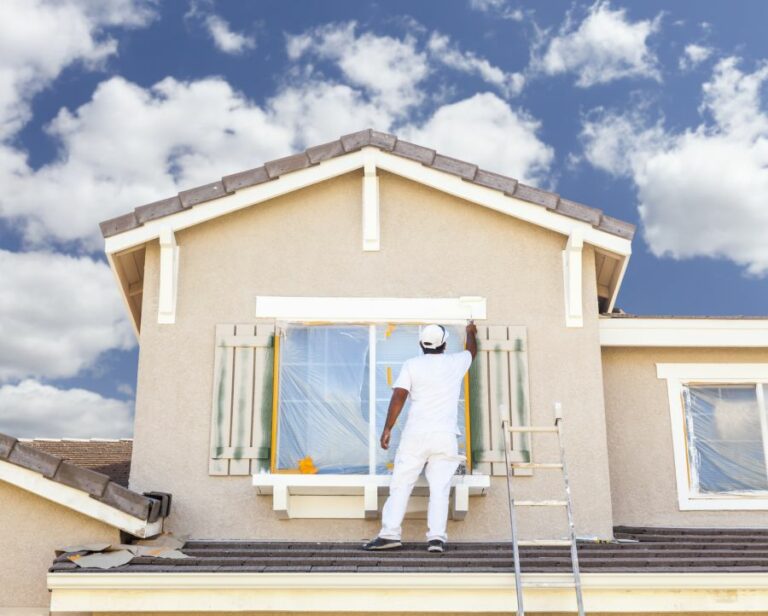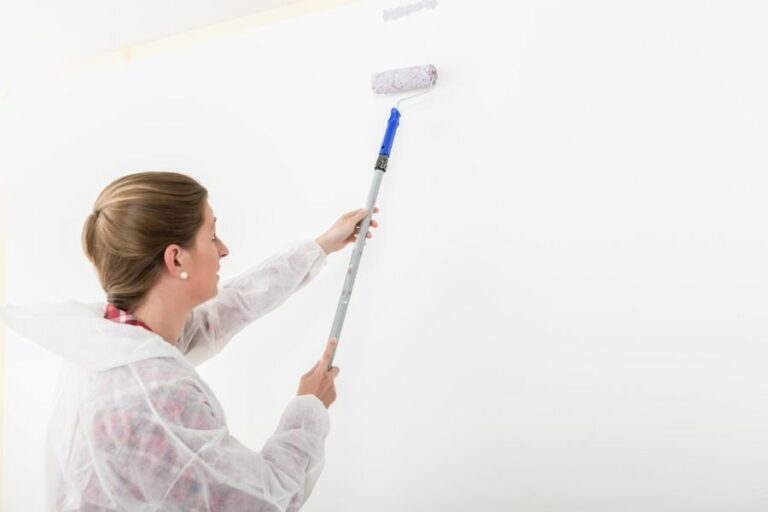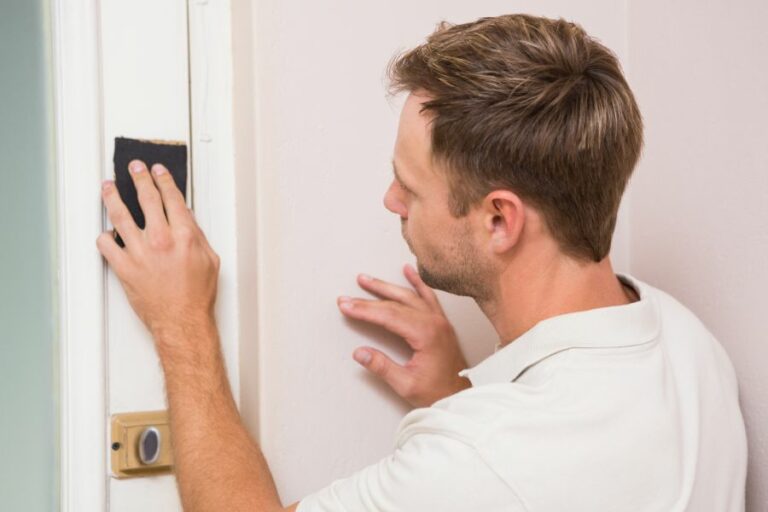Techniques To Prepare Unique Surfaces. What Pros Say
When creating stand-out artwork or transforming your space, preparing unique surfaces is key. Fear not, as we have the ultimate techniques to ensure you achieve impressive results on even the most unconventional materials. With these tried and tested methods, you’ll soon become a master of modifying various surfaces and elevating your projects to a whole new level.
Techniques to prepare unique surfaces:
Surface preparation techniques include sanding and smoothing rough surfaces, cleaning and degreasing surfaces, masking and protecting adjacent areas, priming and sealing surfaces, and texturing to create unique effects. These methods enhance adhesion, seal porous materials, and provide an even base for creative projects such as painting, drawing, or stenciling.

Unlock limitless possibilities in creating stunning, one-of-a-kind art pieces! Dive into this comprehensive guide on techniques to prepare unique surfaces as we explore unconventional mediums and innovative methods to elevate your artistic expression.
Ready to transform ordinary into extraordinary? Read on!
Contents
- 1 Unique Surface Preparation Techniques
- 2 Methods for Surface Preparation Explained
- 3 Top Surface Preparation Techniques to Know
- 4 Surface Preparation Methods for Repair Works
- 5 Ship Painting: Alternate Surface Preparation Methods
Unique Surface Preparation Techniques
Preparing a surface for a creative project, like painting, drawing, or stenciling, can be a challenging task. However, with the right approach and techniques, you can ensure the success of your project.
• Choosing the Right Surface Preparation Technique
The choice of surface preparation technique will largely depend on the type of surface you’re working with, as well as the desired outcome. Below, we’ll cover various techniques that can be used on different surfaces and provide recommendations based on personal experiences.
1. Sanding and Smoothing Rough Surfaces
One crucial aspect of surface preparation is ensuring that the surface is smooth and free of any rough or uneven spots. For surfaces like wood and plaster, this can be achieved through sanding.
When sanding, make sure to use sandpaper with the appropriate grit level. Typically, starting with a coarse grit (60-80 grit) and working your way up to a fine grit (220 grit) will yield the best results.
I recommend using a sanding block or an electric sander to ensure even pressure is applied along the surface. When finished, lightly dampen a cloth and wipe the surface to remove any dust residue.
To further enhance the smoothness, you can apply a primer or sealer, which is available at most hardware stores.
2. Cleaning and Degreasing Surfaces
Oftentimes, surfaces accumulate dirt, debris, and grease over time. This can significantly hinder the adhesion and final result of your project. Therefore, it’s essential to thoroughly clean and degrease surfaces before applying any materials.
For instance, metal surfaces often require special treatment, such as removing rust and cleaning with a degreasing agent. I recommend using a wire brush, steel wool, or an abrasive pad to remove rust and stubborn debris.
Then, use a cleaner specifically designed for metals, such as mineral spirits or acetone, to eliminate grease and other contaminants.
More information on metal surface preparation can be found on this page from the National Association of Corrosion Engineers (NACE).
3. Masking and Protecting Adjacent Areas
When working on your project, it’s crucial to protect surrounding areas to minimize the risk of damage or unwanted paint transfer. Masking tape, painter’s tape, or stencil film can be used to outline and protect areas that you want to keep clean.
In my experience, it’s essential to carefully apply the masking material to ensure a clean and sharp edge. Be sure to press the tape or film down firmly to prevent any bleeding or seepage of your paint or other materials.
4. Priming and Sealing Surfaces
Applying a primer or sealer to your surface can improve adhesion, seal porous materials, and provide an even base for your project. This step is especially important when working with surfaces like wood, MDF, or plaster, as these materials can absorb moisture and cause unevenness.
I recommend using a primer specifically designed for the material you’re working with and consulting the product instructions in terms of application and drying times. Generally, using a roller, brush, or spray can will yield the best results.
5. Texturing and Creating Unique Effects
Adding texture to your surface can create unique, eye-catching effects. For instance, textured paint, plasters, or embossing can be used to add depth and dimension to your project.
When working with textured materials, I suggest using the proper tools and techniques for the job. For instance, trowels or spatulas can be used to apply textured paint or plaster, while specialized rollers are available for creating embossed effects.
• Conclusion
Surface preparation is an essential step to ensure the success and longevity of your creative project. By implementing proper techniques and tools, you can be confident that your surface is ready for painting, drawing, or any other application.
Experiment, practice, and have fun as you explore the vast world of surface preparations and unique materials.
Methods for Surface Preparation Explained
Surface preparation is a critical step in ensuring the success of any coating or painting project. Proper surface preparation not only ensures good adhesion of the coating but also prolongs its life and enhances its performance.
• Why Surface Preparation is Important
Surface preparation is the process of removing contaminants, such as dirt, grease, and oil, and creating an appropriate surface profile for the coating to adhere to.
An inadequately prepared surface can result in poor adhesion, resulting in coating failure, such as peeling, blistering, or delamination.
Additionally, in corrosive environments, proper surface preparation can help prevent corrosion and extend the life of the protective coating, thus reducing maintenance costs and prolonging the life of the substrate.
• Abrasive Blasting Techniques
Abrasive blasting is a widely used surface preparation technique. It involves the use of high-pressure compressed air to propel abrasive particles, such as sand, metal shot, or grit, toward the surface, effectively removing contaminants and creating a uniform surface profile.
– Dry Abrasive Blasting
Dry abrasive blasting is a common method for removing paint, rust, and scale from metal surfaces. It can be performed using various types of abrasives, such as:
- Sand: A traditional abrasive, sandblasting has been largely replaced by other methods due to health risks associated with silica dust inhalation.
- Steel Shot or Grit: More aggressive than sand, steel shot or grit can be used for faster and more effective cleaning of metal surfaces.
- Garnet, Aluminum Oxide, or Glass Beads: These abrasives provide a smoother finish and are suitable for applications that require a finer surface profile.
– Wet Abrasive Blasting
Wet abrasive blasting, also known as vapor blasting or slurry blasting, utilizes a mixture of water, abrasive, and compressed air to remove contaminants from the surface.
This method is preferred in cases where dust suppression is crucial or to avoid the risk of igniting flammable substances.
• Chemical Cleaning Techniques
Chemical cleaning methods involve the use of solvents, detergents, or acids to dissolve and remove contaminants from the surface.
– Solvent Cleaning
Solvent cleaning uses solvents, such as alcohol or acetone, to dissolve and remove oils, grease, and other contaminants. This method is often used as a preliminary step before other surface preparation methods.
– Detergent Cleaning
Detergent cleaning utilizes water-based alkaline or acidic cleaning solutions to remove contaminants from the surface. High-pressure water jets or immersion in cleaning solutions are the common methods of applying detergents.
The effectiveness of this method depends on the type and concentration of the detergent, as well as the dwell time and rinse procedure.
– Acid Pickling
Acid pickling is a technique that involves immersing a metal surface in an acid solution to remove rust, scale, and other corrosion products.
This method is typically used for large-scale metal treatment, such as cleaning steel components or preparing metal surfaces prior to galvanizing. Proper rinsing and neutralization are important steps to ensure that no residual acid remains on the surface.
• Mechanical Cleaning Techniques
Mechanical cleaning methods use physical forces to remove contaminants and create a surface profile suitable for coating.
– Hand Tools
Hand tools, such as wire brushes, scrapers, and sanding blocks, are some of the simplest and most easily accessible cleaning methods. However, they are generally less effective than other methods and are not recommended for critical applications or large-scale projects.
– Power Tools
Power tools, such as rotary wire brushes, sanders, and grinders, offer more efficient and effective cleaning compared to hand tools.
These tools can be used for cleaning large surfaces or removing heavy contaminants and are often used in combination with other surface preparation techniques.
– Vacuum Cleaning
Vacuum cleaning is an effective method of removing loose contaminants, such as dust and debris, especially in confined spaces or sensitive environments. This method uses vacuum devices with HEPA filters to capture and remove contaminants from the surface.
• Surface Preparation Standards and Recommendations
Several organizations, such as the Society for Protective Coatings (SSPC) and the National Association of Corrosion Engineers (NACE), have developed surface preparation standards and guidelines to ensure the effectiveness of surface preparation techniques.
It is essential to refer to these standards and consult with coating manufacturers to determine the appropriate surface preparation technique for a specific application.
In conclusion, proper surface preparation is crucial for the success of any coating or painting project. Understanding and selecting the appropriate technique, along with adhering to industry standards and guidelines, can help ensure the longevity and performance of the applied coating.
With the proper surface preparation technique, you can achieve a high-quality and long-lasting finish that looks great and serves its intended purpose effectively.
Top Surface Preparation Techniques to Know
In the world of coatings and finishes, proper surface preparation is critical to achieving the desired outcome. It significantly impacts the performance, durability, and longevity of the applied coating or finish.
• Abrasive Blasting
Abrasive blasting, also known as sandblasting or grit blasting, is a common technique used to clean and prepare surfaces for coatings and finishes.
It involves propelling abrasive material at high speed against the surface to remove contaminants, roughen the surface, or shape the substrate. Abrasive blasting is often used on metals, concrete, and masonry substrates.
– Types of Abrasive Blasting
- Dry Abrasive Blasting: This technique uses air pressure to propel abrasive material onto the surface. Common abrasives include aluminum oxide, garnet, and steel grit.
- Wet Abrasive Blasting: This method involves using water mixed with the abrasive material, effectively reducing dust emissions and preventing metal substrates from heating up.
- Vacuum or Closed-Loop Abrasive Blasting: This technique incorporates a vacuum system that collects abrasive material and debris, making it more environmentally friendly and efficient.
I recommend referring to the National Association of Corrosion Engineers (NACE) for detailed standards and best practices regarding abrasive blasting.
• Chemical Cleaning
Chemical cleaning is a surface preparation technique that uses various chemical solutions to remove contaminants, such as grease, oil, rust, and paint. The specific chemical and application method will depend on the type of contamination and substrate material.
– Types of Chemical Cleaning
- Degreasing: This process uses solvents or detergents to dissolve grease, oil, and other organic contaminants from the surface.
- Acid Cleaning: Acidic solutions, such as hydrochloric or sulfuric acid, are used to remove rust, mill scale, and other mineral contaminants from metal surfaces.
- Alkaline Cleaning: Alkaline solutions, like sodium hydroxide, are used on surfaces to remove organic contaminants, such as grease and oil.
- Stripping: This technique utilizes chemical paint strippers to remove coatings from surfaces before applying new coatings.
It is crucial to select the appropriate chemical cleaning method for the specific contaminant and substrate to minimize potential damage to the surface.
I recommend consulting with industry experts or referring to guidelines published by organizations like the Society for Protective Coatings (SSPC) to ensure proper procedures are followed.
• Mechanical Cleaning
Mechanical cleaning encompasses a range of techniques, leveraging physical methods to remove contaminants and prepare surfaces for coatings and finishes. These methods are typically used when abrasive blasting and chemical cleaning are unsuitable or too aggressive for the substrate.
– Types of Mechanical Cleaning
- Hand Tool Cleaning: This technique involves manually removing contaminants using various hand tools, like scrapers, wire brushes, or sandpaper. Hand tool cleaning is most appropriate for small areas or touch-ups on larger surfaces.
- Power Tool Cleaning: Power tools, like grinders, sanders, or needle guns, are used to remove contaminants more efficiently. This method is suitable for medium to large surfaces where abrasive blasting is not feasible.
- Ultrasonic Cleaning: Ultrasonic cleaning uses sound waves to create cavitation bubbles in a liquid solution, which effectively removes contaminants from surfaces. This technique is gentle and well-suited for sensitive or intricate components.
For highly specialized applications, it is recommended to refer to established industry standards, such as the American Institute of Steel Construction (AISC) Surface Preparation Specifications.
• Summary of Recommendations
- Evaluate the type of surface, contaminant, and desired coating or finish to determine the most suitable surface preparation technique.
- Refer to established industry standards, like NACE, SSPC, or AISC, for detailed guidelines and best practices for each technique.
- When possible, consult with industry experts for specific recommendations based on your unique circumstances.
Proper surface preparation is crucial in achieving the desired outcome and performance of coatings and finishes. By utilizing the appropriate technique for your application, you can improve adhesion, prevent premature failure, and maximize the lifespan of your coating system.
Surface Preparation Methods for Repair Works
Surface preparation plays a crucial role in ensuring the success of any repair work. Properly prepared surfaces not only enhance the bond between the repair material and the existing substrate but also improve the durability and longevity of the repair.
• Mechanical Methods
– Abrasive Blasting
Abrasive blasting is a surface preparation method that involves the use of high-pressure air to propel abrasive particles onto the surface.
This method effectively removes rust, paint, and other contaminants, providing a clean and textured surface for the repair material to bond. In our experience, abrasive blasting works well for large-scale projects where a significant surface area needs to be prepared.
– Grinding
Grinding is a mechanical method that uses an abrasive wheel or disc to remove rough or uneven surfaces.
This method is highly effective for preparing small to medium-sized surfaces with defects or irregularities, such as cracks, holes, or protrusions. We recommend using grinding for localized repair work, as it provides excellent control over the removal of the damaged substrate.
– Scarifying
Scarifying is a mechanical method that uses rotating cutting wheels or flails to remove the top layer of a surface. This method is commonly used to remove deteriorated concrete, asphalt, or coatings from surfaces.
We recommend using scarifying when a uniform surface profile is required for the repair material to bond effectively.
– Milling
Milling is a mechanical method that uses rotating drums with cutting teeth to break up the surface and remove the damaged material. This method is particularly effective for removing deteriorated or damaged concrete or asphalt.
We recommend milling for large-scale repair work where a significant depth of material removal is required.
– Shot Blasting
Shot blasting is a mechanical method that uses high-speed steel shots to blast the surface, removing contaminants and abrading the surface for a better bond with the repair material. This method ensures minimal dust generation and is ideal for both small and large-scale projects.
We recommend shot blasting for surfaces where a moderate to heavy level of surface preparation is needed.
• Chemical Methods
– Acid Etching
Acid etching is a chemical surface preparation method that involves the application of an acid solution to the surface. The acid reacts with the surface, dissolving the contaminants and leaving a clean and slightly roughened surface for repair material adhesion.
We recommend acid etching for small-scale projects where mild surface preparation is sufficient.
– Solvent Cleaning
Solvent cleaning is a simple and effective method of removing contaminants such as oil, grease, and dirt from surfaces. In this method, solvents are applied to the surface and then wiped or scrubbed off, taking the contaminants with them.
We recommend using solvent cleaning on surfaces where contaminants are present to ensure the proper adhesion of the repair material.
• Thermal Methods
– Flame Cleaning
Flame cleaning is a thermal method that uses a propane torch or oxy-acetylene torch to remove contaminants such as rust or paint from the surface. The intense heat generated by the flame causes the contaminants to oxidize, turning them into a residue that can be easily removed.
We recommend using flame cleaning on surfaces with heavy rust, paint, or other heat-resistant coatings.
– Laser Ablation
Laser ablation is a non-contact thermal method that uses a high-energy laser beam to remove contaminants and roughen the surface. This method is extremely precise, making it particularly suitable for intricate or complex surfaces.
We recommend laser ablation for delicate surfaces or when a high level of precision is required for surface preparation.
• Recommendations
When choosing a surface preparation method, consider the size and complexity of your repair project, the type and extent of surface defects and contaminants, and your desired level of surface profile.
In our experience, a combination of mechanical, chemical, and thermal methods often works best for various repair works tailored to the specific requirements of each project.
Remember, proper surface preparation is vital for achieving the desired bond between the repair material and the existing substrate and extending the life of your repair work.
Method | Description |
|---|---|
Cleaning | Removal of dirt, dust, grease, and other contaminants from the surface. |
Abrasive Blasting | Cleaning and roughening the surface using abrasive materials like sand or steel shot. |
Water Jetting | High-pressure water is used to remove loose materials, clean, and roughen the surface. |
Mechanical Methods | Using mechanical tools like scrapers, wire brushes, and grinding machines to clean and roughen the surface. |
Chemical Methods | Application of chemical solutions like solvents, detergents, and acids to remove contaminants and roughen the surface. |
Laser Ablation | Using a laser beam to remove contaminants and roughen the surface with minimal damage to the substrate. |
Ship Painting: Alternate Surface Preparation Methods
Ship maintenance, particularly the application of protective coatings, is a crucial aspect of the maritime industry. Without proper surface preparation, the ship’s structure can be susceptible to damage from saltwater, marine organisms, and other environmental factors.
While abrasive blasting is the most common method for preparing a surface for painting on a ship, there are several alternative methods that can be utilized depending on the specific requirements and constraints of the project.
– Chemical Cleaning
Chemical cleaning involves the application of various chemical agents to remove contaminants, such as grease, oil, and surface rust, from the ship’s surface.
This method is particularly useful for cleaning intricate components, such as pipes and valves, that can be difficult to reach with mechanical tools. Chemical cleaning agents may include alkaline cleaners, acidic cleaners, and solvents.
When using this method, it is essential to select the appropriate type of chemical cleaner for the specific contaminant present on the surface. Additionally, proper handling and disposal of chemicals must be observed to ensure the safety of the workers and the environment.
– High-Pressure Water Jetting
High-pressure water jetting, also known as hydro blasting, is a method that uses high-pressure water to remove contaminants, rust, scale, and old paint from a ship’s surface.
Typically, the water is pressurized to anywhere from 5,000 to 40,000 psi, depending on the surface condition and the desired level of cleanliness.
One of the main advantages of high-pressure water jetting is that it eliminates the need for abrasive media, reducing the environmental impact and disposal costs associated with other methods like abrasive blasting.
Additionally, this method has the potential to clean surfaces more quickly, particularly in areas with complex geometries.
– Hand- and Power-Tool Cleaning
Hand- and power-tool cleaning are two methods that employ manual or powered tools to remove contaminants, rust, and old paint from the surface of the ship. Examples of such tools include wire brushes, scrapers, sanders, and needle guns.
While these methods may not be as effective as abrasive blasting or high-pressure water jetting, they can be a suitable alternative for small-scale projects or when there are time constraints or environmental concerns.
The primary goal of hand- and power-tool cleaning is to achieve a surface with a sufficient profile for the new coating to adhere to effectively.
When using these methods, it is important to ensure that the tools are in good working condition and that operators receive proper training to avoid damaging the ship’s surface.
– Slurry Blasting
Slurry blasting, sometimes referred to as wet abrasive blasting, is a method that combines water, abrasive media, and compressed air to clean a ship’s surface.
The primary advantage of this method over dry abrasive blasting is that it generates less dust, making it more environmentally friendly and reducing the risk of respiratory issues for workers.
Slurry blasting can also be more effective in removing certain types of coatings and contaminants that may be difficult with dry abrasive blasting alone.
However, this method can produce a considerable amount of wastewater, and proper containment and disposal are necessary to prevent environmental contamination.
– Vacuum Blasting
Vacuum blasting is a method that involves the use of a blast nozzle with an attached vacuum shroud to remove contaminants and prepare a ship’s surface for painting.
The abrasive media and removed contaminants are immediately collected by the vacuum system, significantly reducing the amount of airborne dust and debris.
This method is particularly useful in situations where environmental regulations or confined working spaces are a concern. Vacuum blasting minimizes the exposure of workers to airborne contaminants and results in a cleaner work environment.
Additionally, it eliminates the need for extensive containment and cleanup measures, potentially reducing overall project costs.
• Conclusion
Each of the alternative surface preparation methods mentioned above has its benefits and limitations. The choice of method will largely depend on the specific situation, the nature of the contaminants present, and the desired level of cleanliness for the ship’s surface.
It is essential to thoroughly assess the project requirements and consult with industry experts when determining which method is the most appropriate for your ship painting project.
Ultimately, proper surface preparation is key to ensuring the durability and longevity of the protective coatings applied to the ship’s surface.
S.No | Methods Used for Preparing a Surface for Painting on a Ship |
|---|---|
1 | Hand-Tool Cleaning (Scrapers, Wire Brushes, Sanding) |
2 | Power-Tool Cleaning (Wire Brushes, Grinding Disks, Sanding) |
3 | Solvent Cleaning (Dewaxing, Degreasing) |
4 | Abrasive Blasting (Dry, Wet, or Vacuum) |
5 | Water Jetting (High-Pressure or Ultra-High-Pressure) |
6 | Chemical Stripping (Paint Removers) |
7 | Thermal Stripping (Heat Guns, Flame Cleaning) |
8 | Laser Ablation |
9 | Electrochemical Cleaning (Electrolytic Rust Removal) |
10 | Mechanical Cleaning (Shot Peening, Hydro-Blasting, Needle Guns) |







